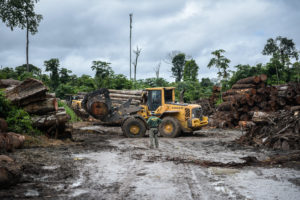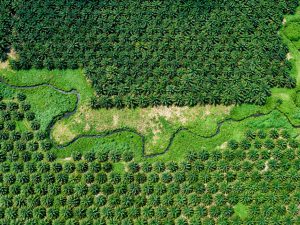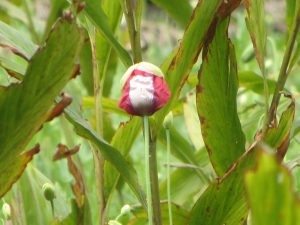Latin America’s natural wealth is undeniable. It is a cause for both celebration and concern. For example, the region holds the greatest diversity of flora in the world, but at the same time 46% of global mining and socio-environmental conflicts, according to the Canadian National Resources and Development Institute.
Between 1990 and 2015 the region lost more than 96 million hectares of forest. The vertebrate animal population decreased by 89% between 1970 and 2014.
Faced with alarming biodiversity loss, Latin America is searching for solutions to its multiple conservation, and climate change adaptation and mitigation challenges.
Here are 5 ways Latin Americans are using innovative, low-cost technologies to improve waste management, monitor illegal mining, logging and hunting, and track invasive species.
Bioacoustics to monitor protected areas
Audiomoth is an easy-to-use and affordable bioacoustic (the study of animal noises) recording device. It records the duration and frequency of animal noises and uses computer-programmed algorithms to determine which species are present in certain areas.
The price of a device usually ranges between US$200 and $700 and several are required to obtain a complete information. For this reason, researchers from the University of Southampton (UK), in collaboration with the National Autonomous University of Mexico (UNAM) created Audiomoth, a monitor that uses cheaper parts, and costs between $23 and $46.
A new version of the device is designed to also capture the sound of bullets and electric saws – tell-tale signs of illegal logging and poaching, a trade that is worth over US$50 billion annually, according to the UN’s Environment Programme.
Conservationists in Belize’s Tapir Mountain Nature Reserve, who have few resources to combat illegal activities, have used Audiomoth, as have indigenous communities in Mexico’s northern Yucatán peninsula, who identified big cats in the Black Forest.
Geospatial data against climate change
Jaime Rodrigo Varas witnessed how a 2015 flood in the Chilean municipality of Chañaral destroyed more than 200 homes and took 80 lives because evacuation signs were hard to see. He taught himself to develop a mobile phone application that uses geospatial data to inform users about flood-prone areas, evacuation routes, and meeting points. It even allows missing people to upload their location.
Geospatial data is information about locations on Earth. It uses photographs from satellites. The Chilean government have made these images openly available, enabling Varas to model evacuation routes and plot them on a map – license free. The result was Thaki.
Free of licenses, other communities susceptible to the effects of climate change can use Thaki and adapt it to their needs.
An app against poor waste management
In 2017, a team of eight volunteers in Quito, Ecuador, started ReciVeci, a cell phone application that allows residents to deliver recyclable waste directly to local waste pickers. The application indicates who the local recycler is, how to contact them and how to deliver the waste. More than 200 recyclers are on the database.
The app has Recipuntos, or “recycling points’. For every transaction of recyclable materials made, citizens receive points that can be exchanged for food and services.
The application is free and available for Android and IOS. It can be widely used since in Ecuador each family has at least one cell phone with internet access. An update of the application will take on feedback from recyclers, who require only a cell phone with an offline messenger service. The third stage will include businesses and could extend to other cities in Ecuador.
Drones against invasive species
Former World Bank Innovation Lab astrophysicist Bruno Sánchez-Andrade developed a drone that constantly captures photos at a certain height, monitoring the paths of poachers. Colour changes in images taken at different times enable Sánchez-Andrade to create a 3D model of the land. This allows changes in the density of vegetation and invasive species to be detected.
Sánchez-Andrade’s drones spotted the yellow gayomba – an ornamental but invasive plant native to southern and western Europe – in protected biospheres in Ecuador. The flower can alter the structure and abundance of native species, preventing their regeneration and impacting water cycles. His team also took the project to the El Impenetrable National Park in Argentina, an area with a serious poaching problem.
Local people can be trained to use the drones to monitor protected areas and process the data.
Satellite maps against deforestation
Carlos Mazabanda, Amazon Watch’s team coordinator in Ecuador, wanted to study the impacts of the El Mirador copper mine, a project run by the Chinese-owned company Ecuacorriente S.A. However, analysing this remote Amazonian region of Ecuador is risky and complex.
Using satellite images they could study deforestation more safely – finding it has led to the destruction of 9,928 hectares.
Mazabanda allied with Digital Globe, Planet and Amazon Conservation Team, which have the licenses to obtain satellite imagery. Once obtained, the user can detect the initial processes of deforestation, such as human settlements.
This visual representation of an often remote problem caused outrage among Ecuadoreans and the images went viral. The media paid attention to the issue and pressure led to the prohibition of mining exploitation in some areas.
However, the controversial Mirador project continues and is expected to begin extracting metals within the next two years.








